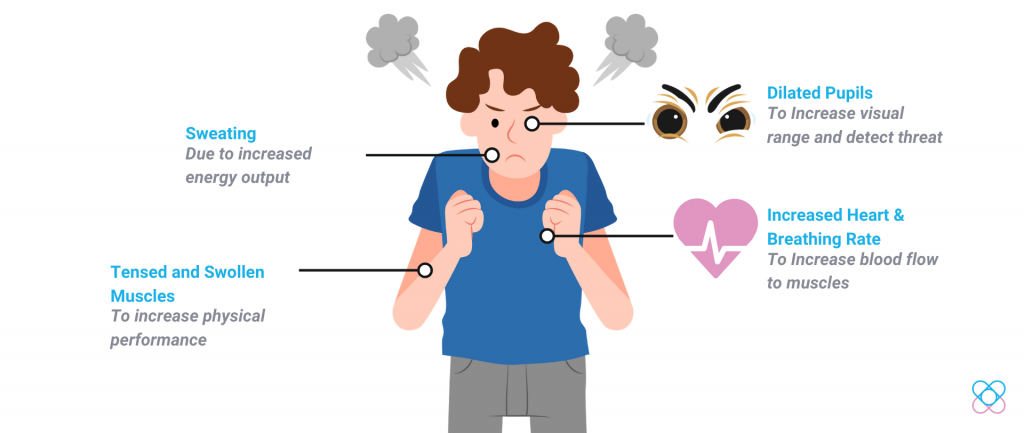
Fight! Run! How will you ACTUALLY respond in the face of imminent danger?
That is the question we always ask ourselves when we watch movies. Many of us would bravely say “I will FIGHT for the life of me!” while some would logically argue “I will RUN for the life of me!“. Well, truth be told we often do not know how we will respond till that day comes. But what if the answer is already there hiding in the midst of our genes? Furthermore, what if I told you that this response is always present in our daily lives and is one of the determining factors of our behavior?
The Fight Or Flight Gene
The Adrenergic α2 gene or ADRA2, as well as the Adrenergic β2 gene or the ADRB2, encodes for Adrenergic receptors which respond to epinephrine(adrenaline). Changes in these genes affect our response to danger, but to really understand how this is relevant we should first understand the fight or flight response itself.
The Response
In the face of perceived danger, our adrenal glands release cortisol (stress hormone) and epinephrine (adrenaline). These hormones, in turn, prime our body by;

Adrenergic Receptor Mutations
Hence, these receptors affect the signaling of the adrenaline during stress. Changes or mutations in these genes mean the way our body and minds respond to stressful events will differ. Some mutations may increase adrenaline signaling while some may decrease it.
Studies have shown some mutations in the ADRA2 gene which can only be found in humans and chimpanzees. Subsequently, we are the only 2 species that actively engage in aggressive warring behavior. Furthermore, studies have also shown multiple variants of the ADRB2 gene is also present in humans. These mutations meant increased fight or flight response sensitivity which leads to increased behavioral traits.
The Modern Man
These responses are evolutionary traits that help us prepare for stressful events. This meant survival for our spear-wielding ancestors but how is it still useful now?

This response activates at different stages for different individuals. The most common example of a daily fight or flight response is stage fright. Simple situations such as ordering food, presenting, or engaging in a conversation can incite stage fright. While we all feel some discomfort under the spotlight, we often notice some people can stay perfectly calm while others would start jittering and sweating. What we call nervousness is actually the excessive stimulation of our nervous system due to stress.
In response, many develop different ways to deal with this. It can be in the form of engagement (fight) or yielding(flight). But do not fret, these primitive responses are subconscious actions only when we do not realize it. Hence, many behavioral therapists coach us to practice certain behavioral exercises. This not only helps us understand our response but to also control it.
Take Control
Hence, little mutations in our adrenergic receptor genes produce a vast array of behavioral responses to stress among us. Furthermore, you now know you can change and control your behavior to suit your taste. So take control and learn more about yourself to become a better person. A great place to start is with our blogs!
Interested to know more about your genes and make the best use of your potential?
Check out DNA Explorer Personal, starting at RM179 only!
References
1. Lee KS, Chatterjee P, Choi E-Y, Sung MK, Oh J, Won H, et al. (2018) Selection on the regulation of sympathetic nervous activity in humans and chimpanzees. PLoS Genet 14(4): e1007311. https://doi.org/10.1371/journal.pgen.1007311
2. Komiyama, T., Yoshikawa, M., Yokoyama, K. et al. Analysis of the source of aggressiveness in gamecocks. Sci Rep10, 7005 (2020). https://doi.org/10.1038/s41598-020-63961-1
3. verywellmind.com. How the Fight-or-Flight Response Works. https://www.verywellmind.com/what-is-the-fight-or-flight-response-2795194
4. Bers DM. Adrenergic Fight-or-Flight: S-NO Falls on PKA Targets. Circ Res. 2015;117(9):747-749. doi:10.1161/CIRCRESAHA.115.307397

